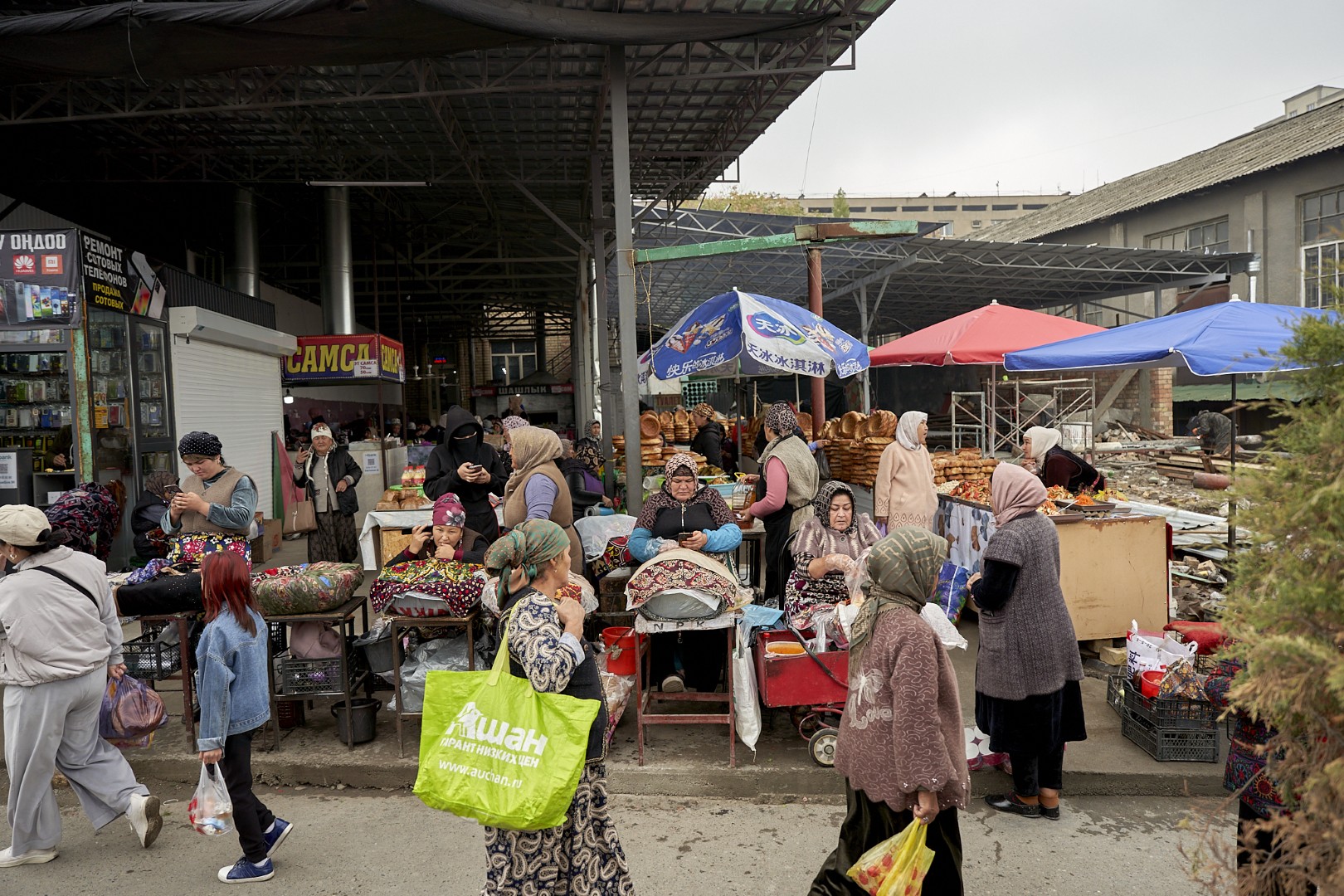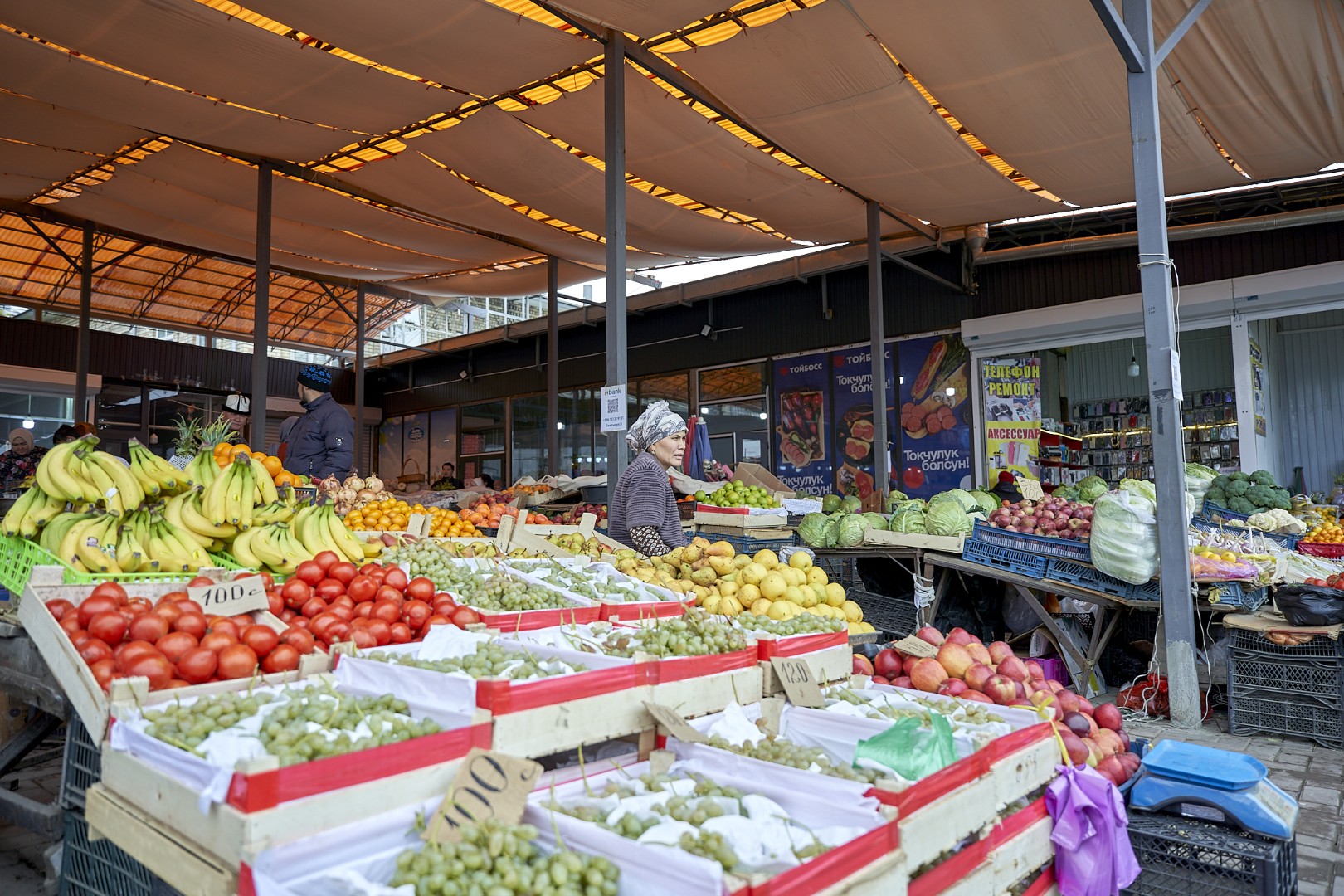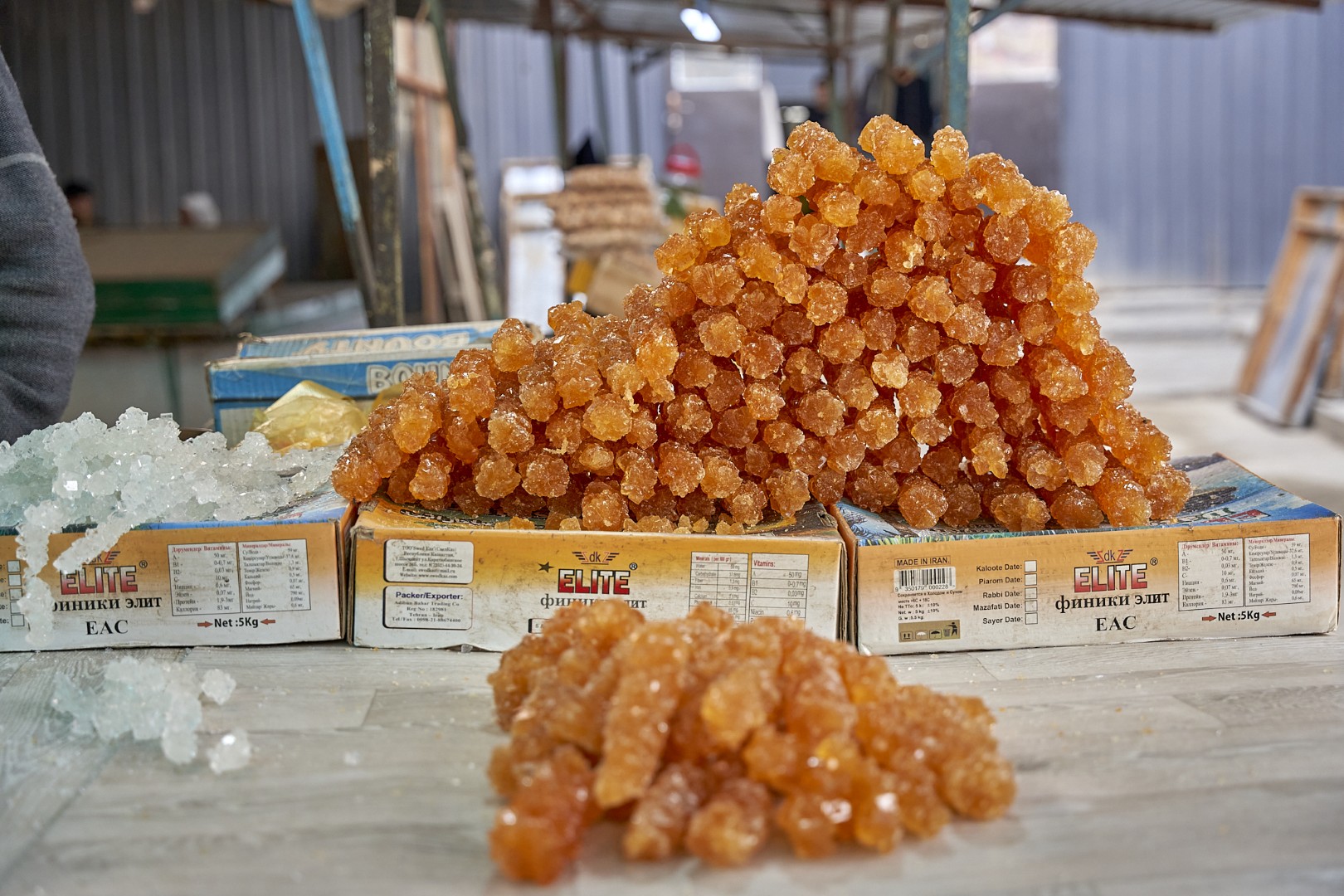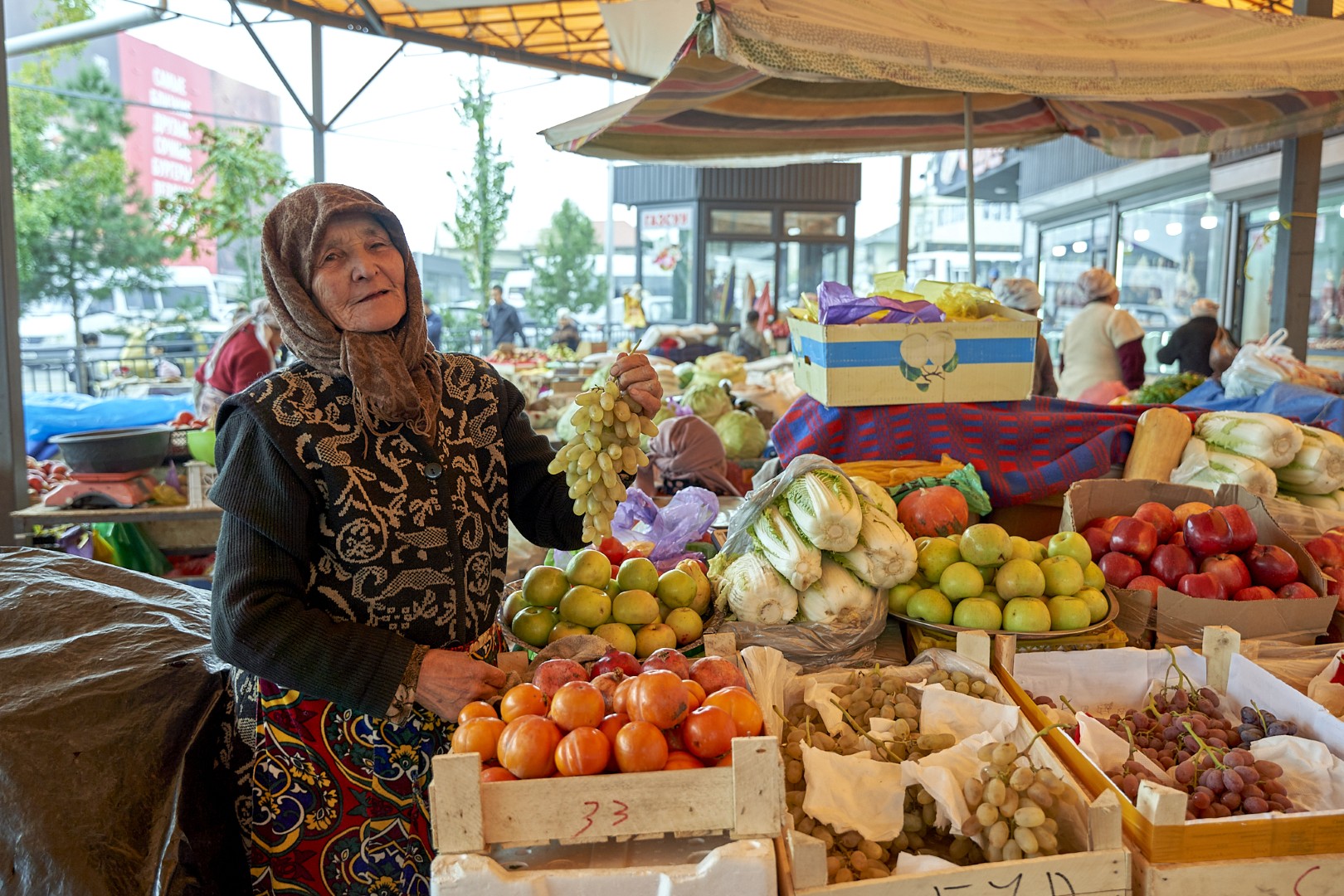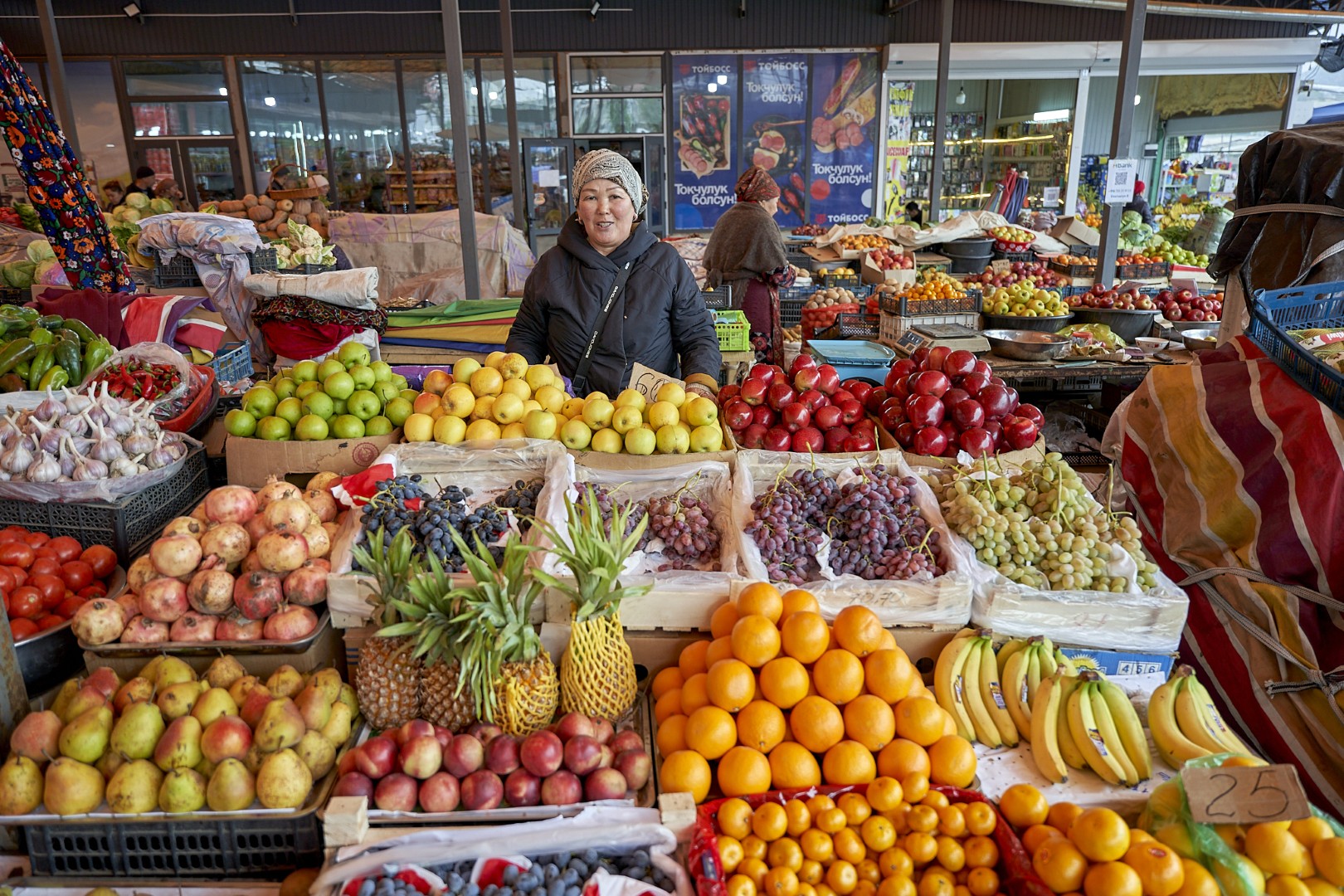

Entrance fee – no fee

10:00 – 16:00

No closing days
Add to My Tour
History of the Bazaar
Osh’s old bazaar dates back to the founding of the city, some three thousand years ago. Today, many of the smaller local bazaars have disappeared or changed locations, and only the old bazaar remains the same, at home on the banks of the Ak-Buura.
At the end of the 19th century, more than 8,000 people were engaged in cottage industries in local bazaars, and 4,600 people were regularly trading there. At the turn of the 20th century, the old bazaar already had 1,300 trading stalls. The turnover of the bazaar, together with other trading areas in Osh, amounted to several million roubles a year at pre-World War I exchange rates.
During the Soviet period, bazaars became part of a complex system of public-private relations. They became known as “kolkhoz markets,” after the collective farms that supplied them. They were divided into a food markets, mixed markets, where both agricultural products and manufactured goods were traded, and feed markets, where livestock, poultry and fodder for cattle were traded. The old bazaar in Osh was a mixed type of bazaar.
In 1986, the Osh bazaar had a trading area of about 12 hectares, which incorporated 1,750 trading stalls and 500 pavilions. The bazaar had its own storage room, six cold rooms for perishable products, and a 68-bed hotel. In the 1980s, the old bazaar was reconstructed, and a large arch was built at the main entrance, though today it is partially obscured behind the pavilions.
Despite all the external changes and alterations, the old bazaar is still a classic oriental bazaar that is divided inside into other mini-bazaars. Take a walk through it to experience the bright colors, unique flavors and variation of the old bazaar, which continues to welcome traders and shoppers just as it did a thousand years ago.

Locations Nearby
-
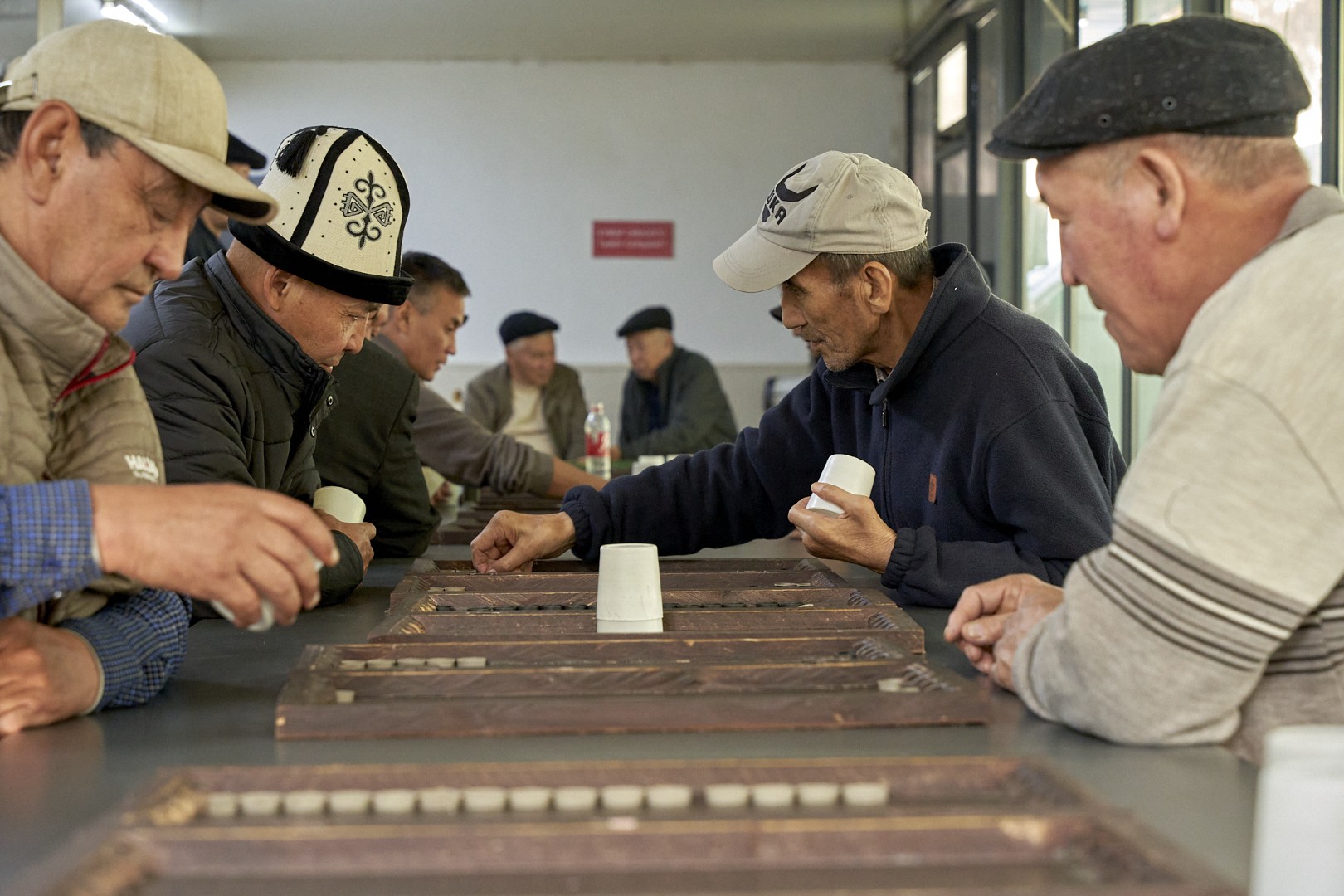
Diversity
Start your leisurely stroll through the old bazaar with a piala, the traditional teacup, of fragrant green tea. Stop by one of the local teahouses…
-

Artisans
The old bazaar is famous for its artisans, who cherish and preserve the secrets of their handicrafts, and whose wares are still in demand among…
-

History of the Bazaar
Osh’s old bazaar dates back to the founding of the city, some three thousand years ago. Today, many of the smaller local bazaars have disappeared…
-

Blacksmiths’ Row
The blacksmiths’ row is situated on the bank of the Ak-Buura, in the most colourful part of the old bazaar, as it has been for…
Other Locations
-
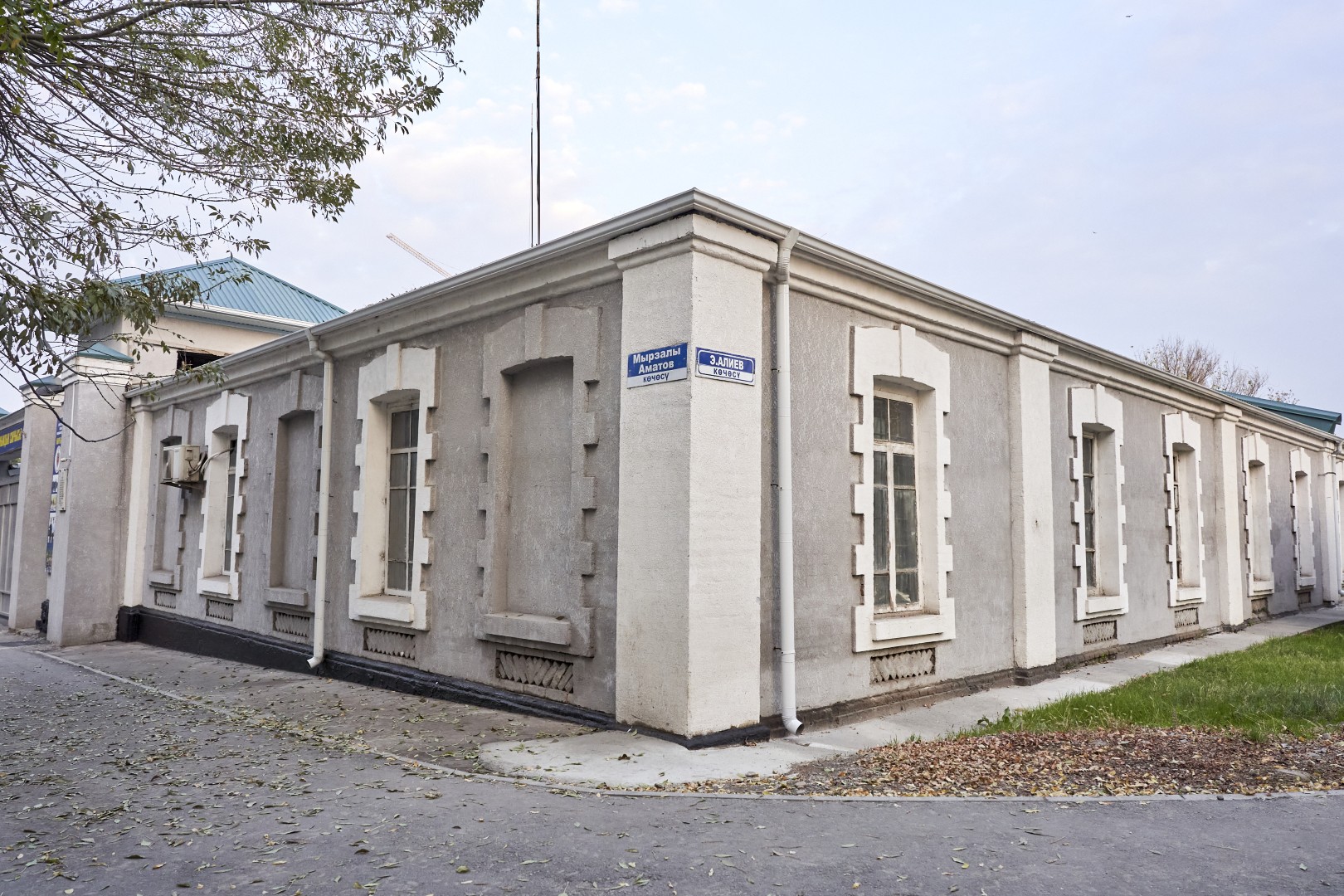
Osh Fortress
The Osh fortress was built in 1919 on the site of the former Tsarist Russian military barracks, located in the very center of the “new…
-
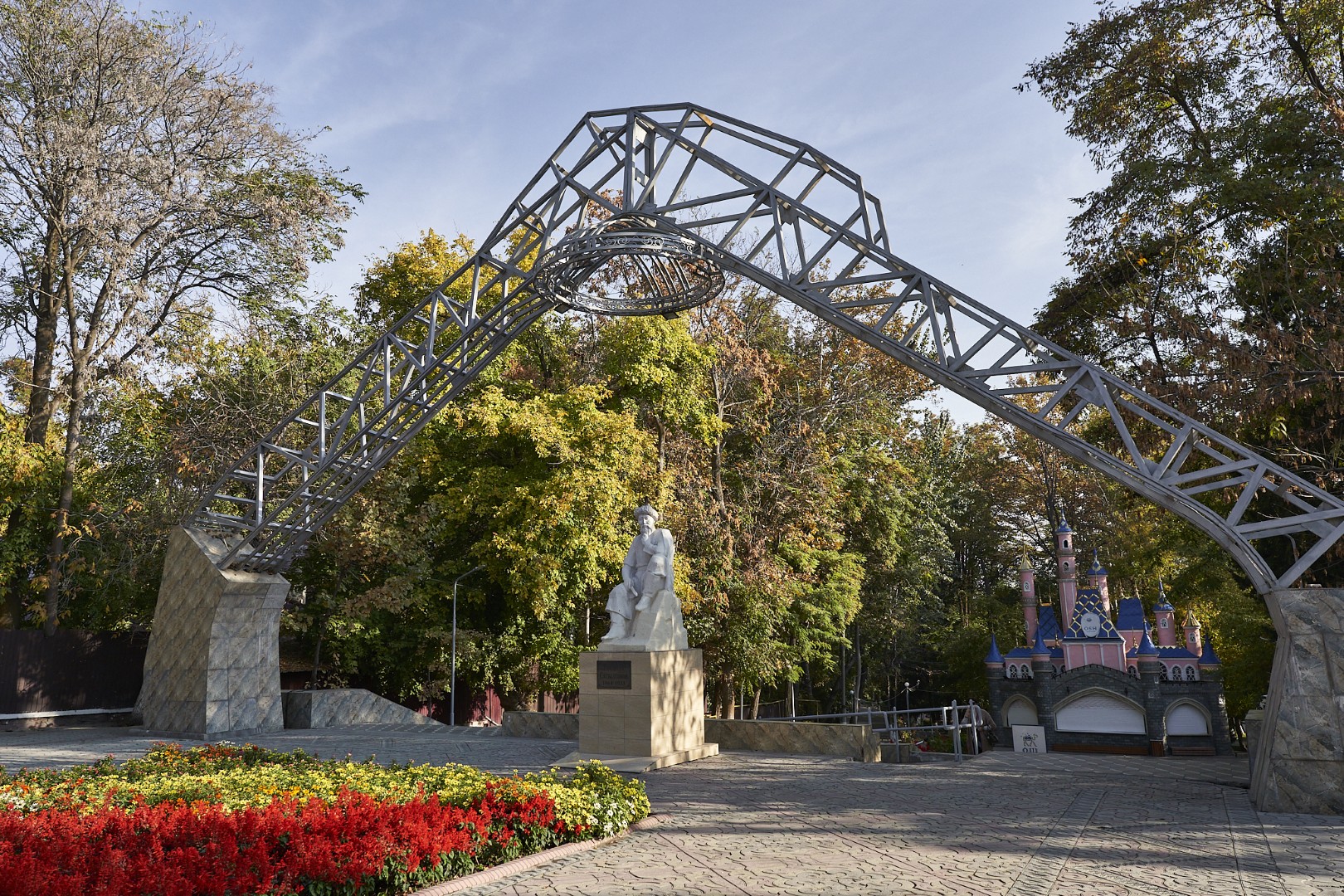
Toktogul Park
One of the oldest city parks in Osh, Toktogul Park was founded in 1878 as the city garden of the Governor-General. During the same period,…
-

Soviet city near the Alai Mountains
Welcome to Soviet Osh! The current appearance of the city was largely formed during that period. The Second World War delayed the realization of the…
-

Artisans
The old bazaar is famous for its artisans, who cherish and preserve the secrets of their handicrafts, and whose wares are still in demand among…
